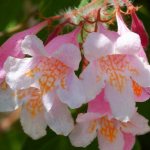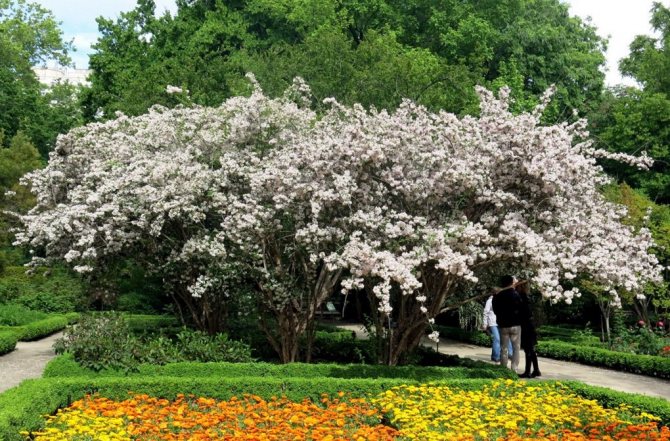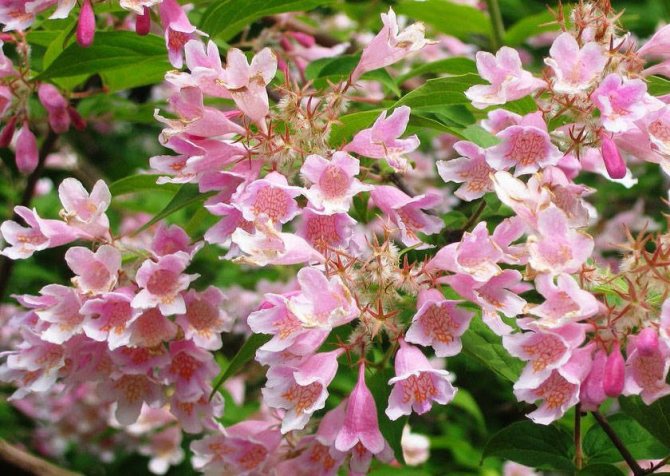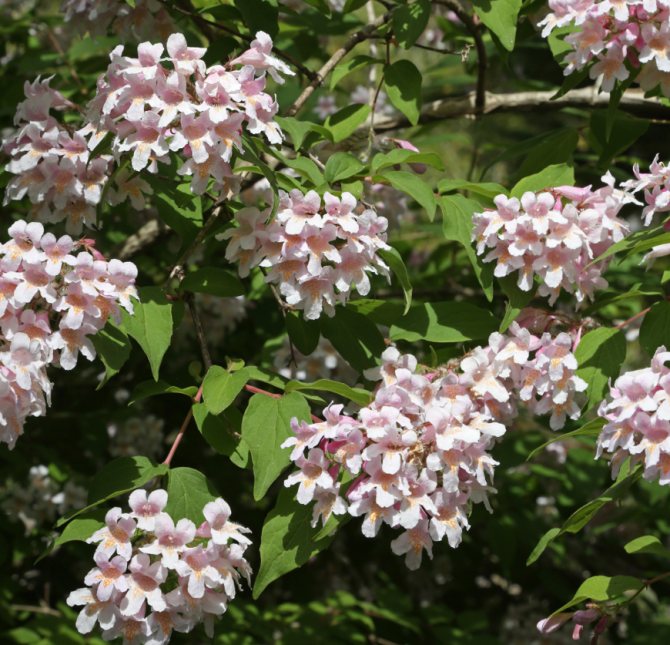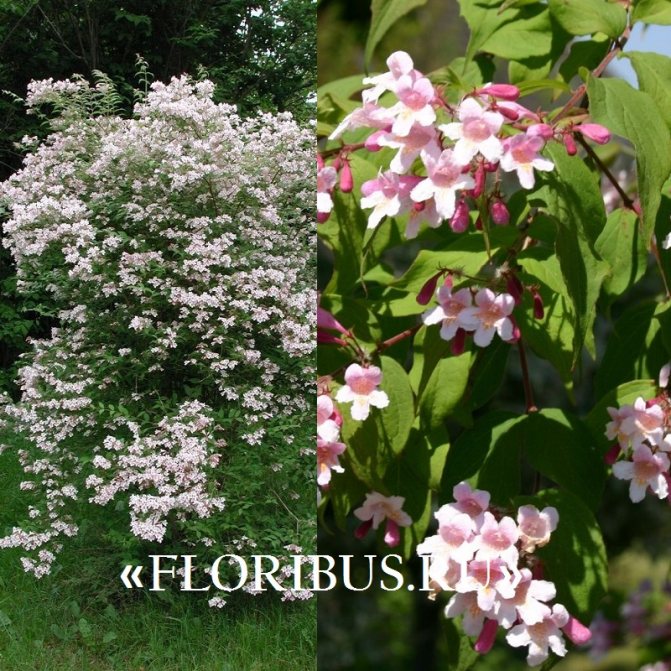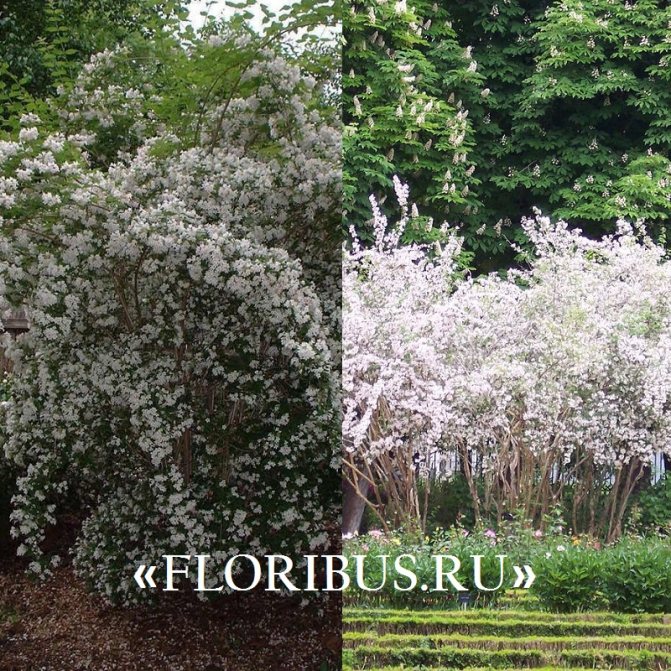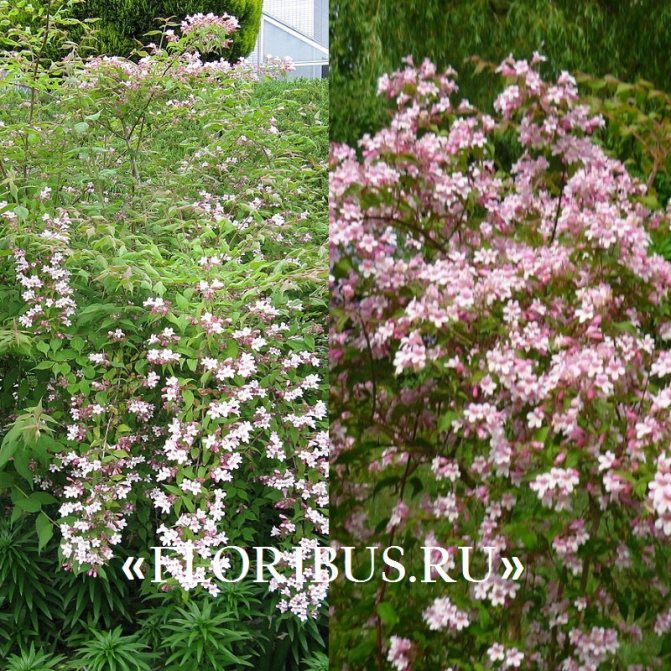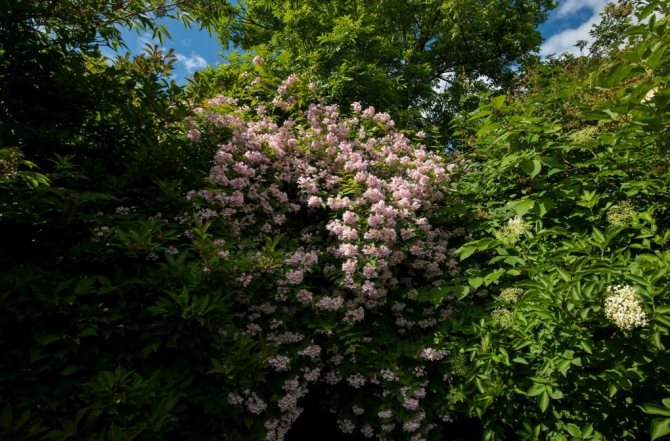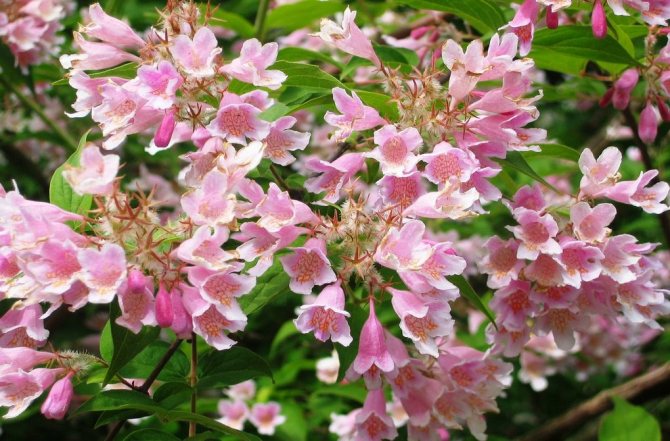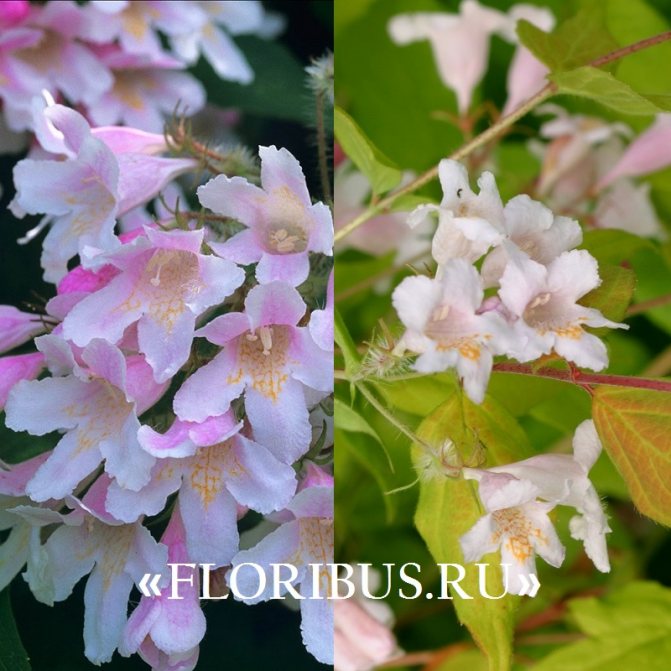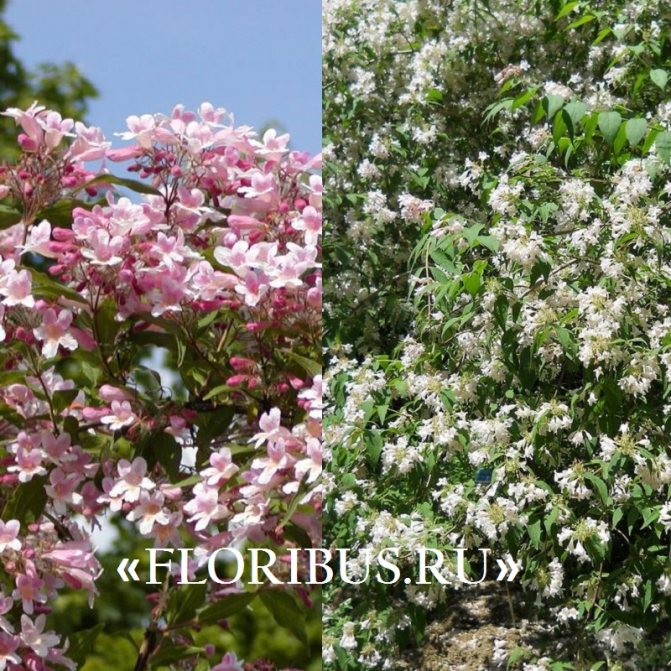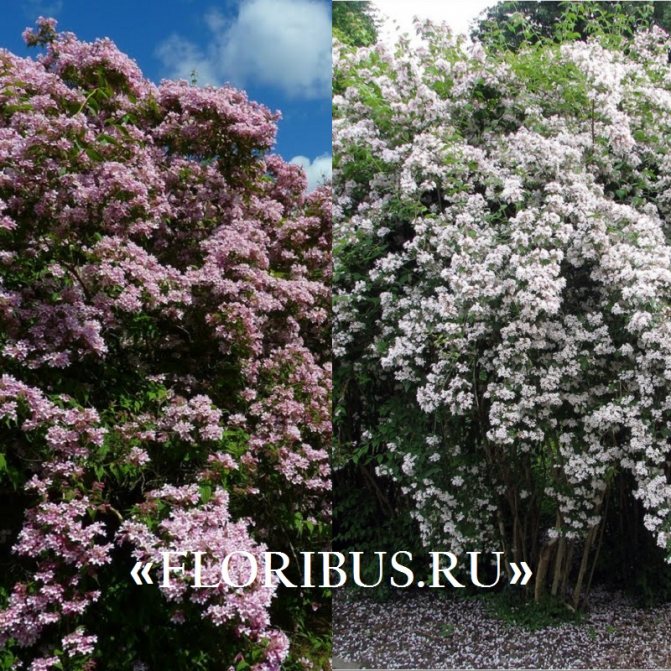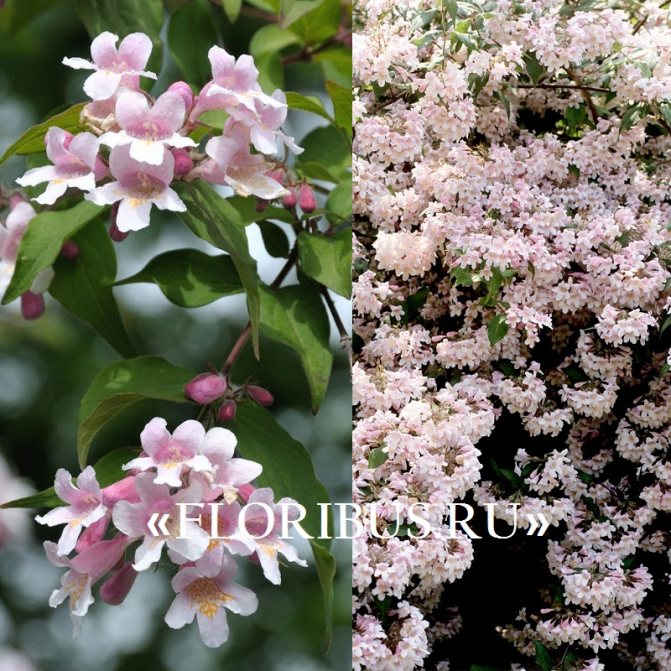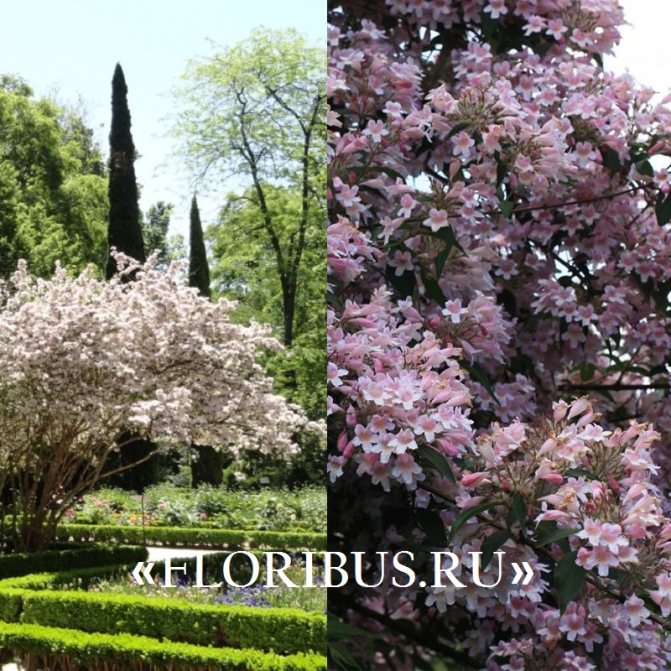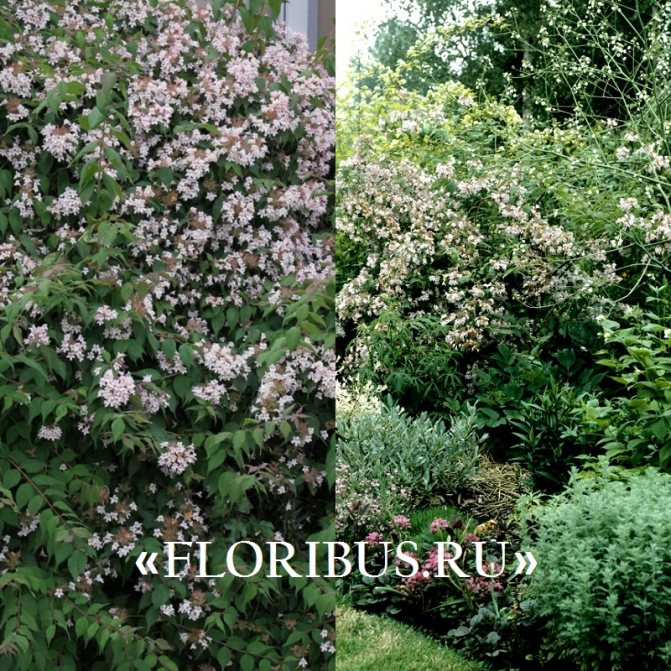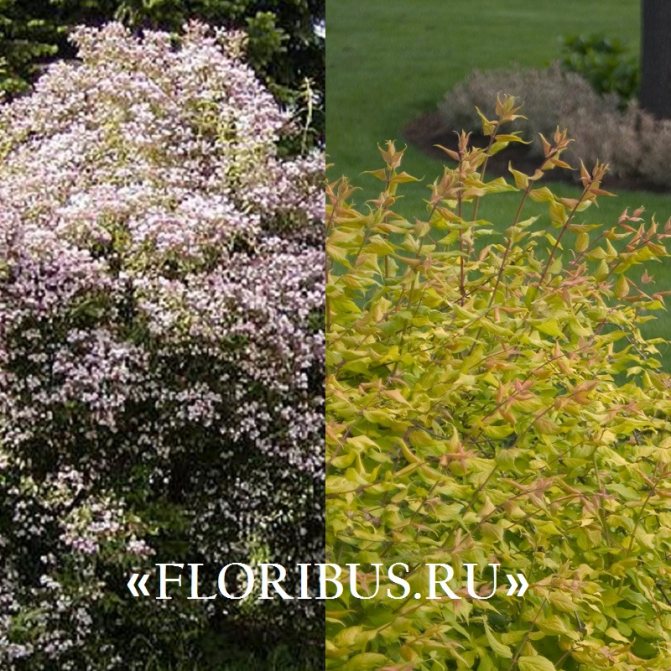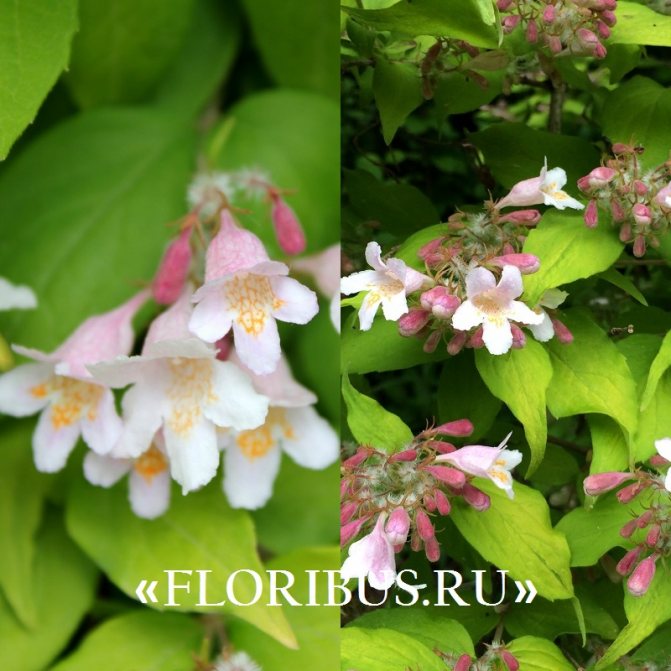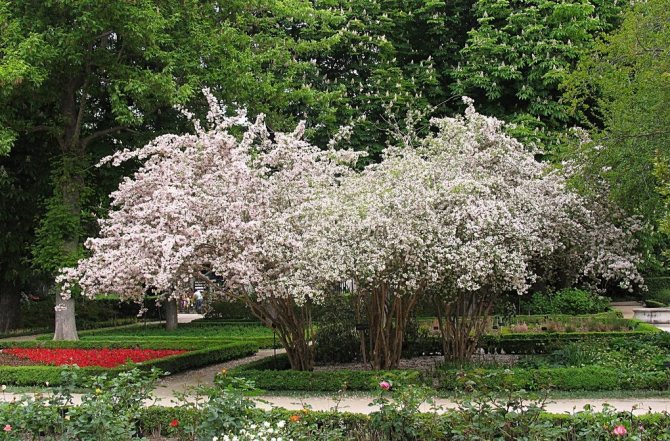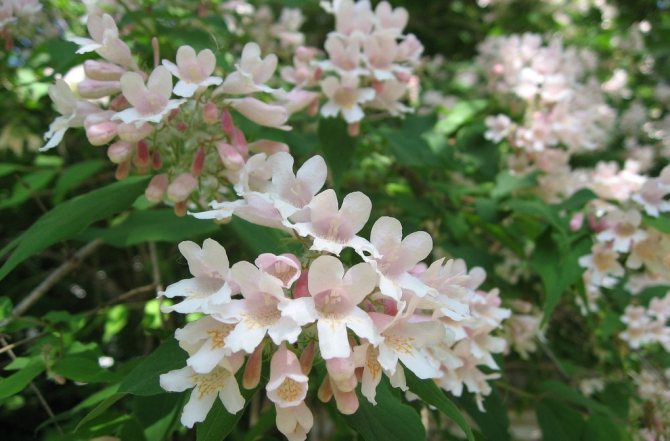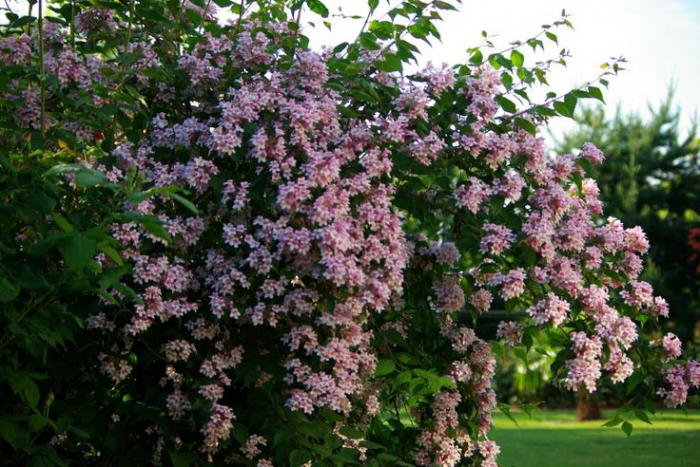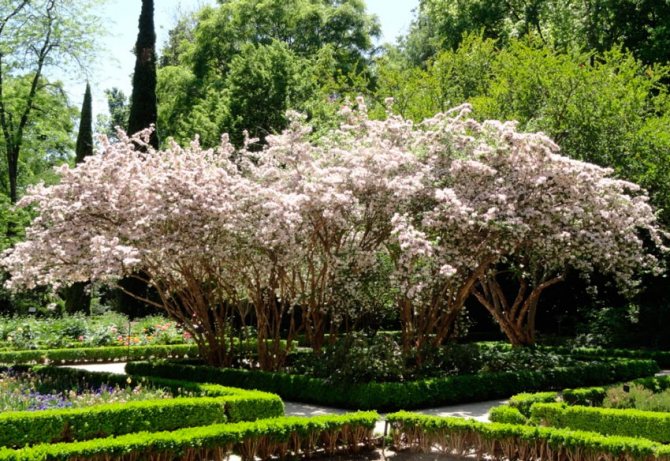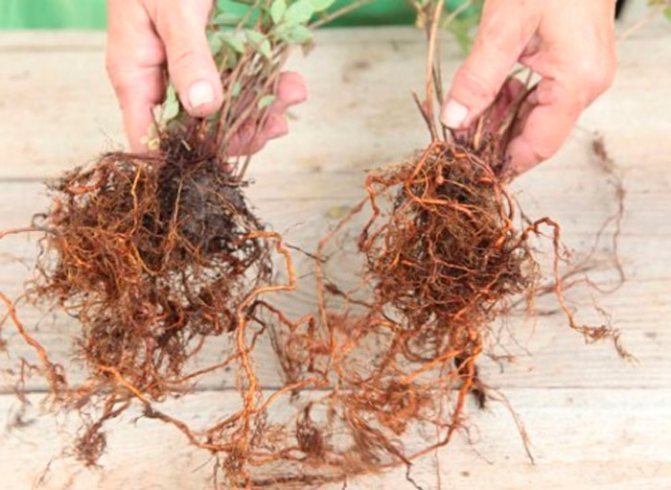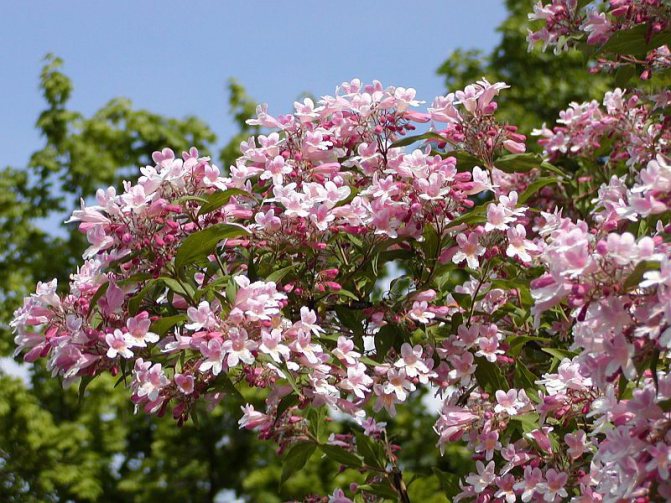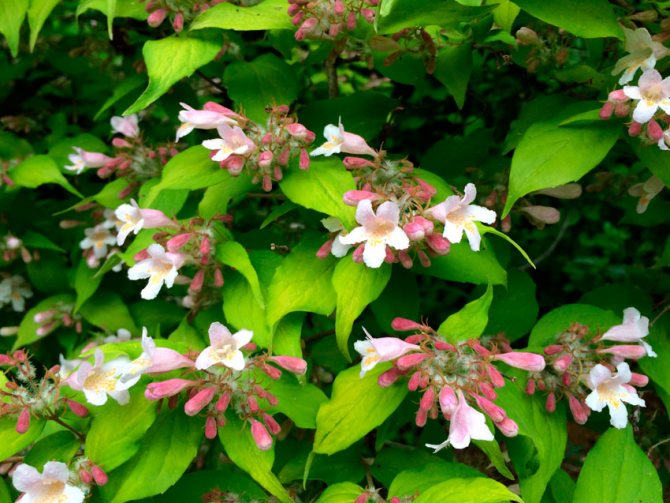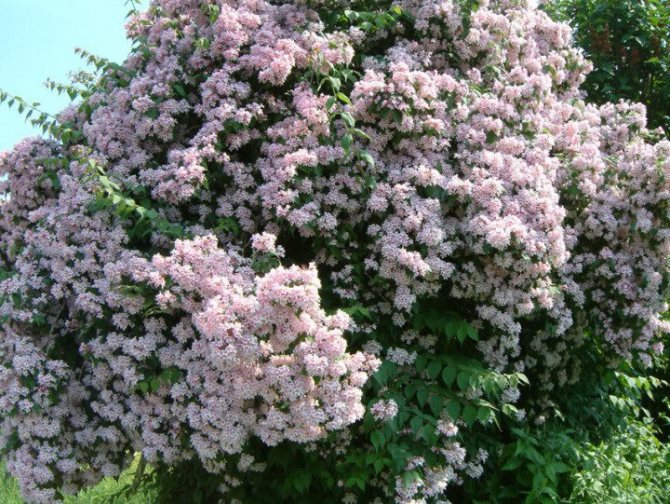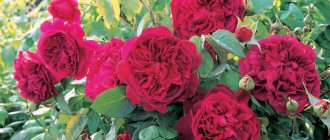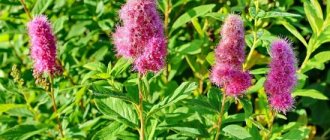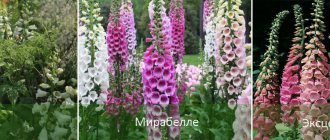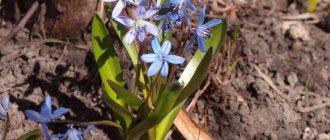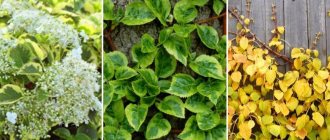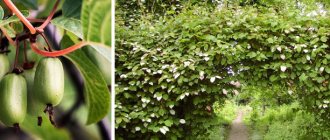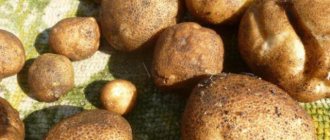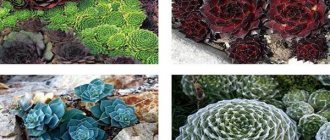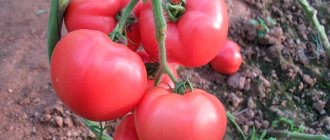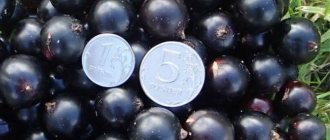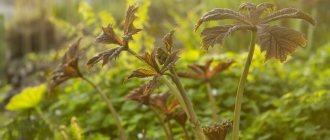Kolkwitzia (Kolkwitzia) belongs to the genus of flowering representatives of the flora, included in the Honeysuckle family (Caprifoliaceae) and its subfamily Linnaeaceae. This genus is monotypic, that is, it contains all one species - Kolkwitzia amabilis. The natural habitat is in the mountainous central regions of China, as well as Manchuria. The altitude at which kolquitia is found is 300–1300 m above sea level. Today, plants are cultivated in many areas of the planet with a temperate climate.
| Family name | Honeysuckle |
| Growing period | Perennial |
| Vegetation form | Shrub |
| Breeds | Vegetatively (by dividing the bush, cuttings, layering) very rarely using seeds |
| Open ground transplant terms | In the end of April |
| Landing rules | Leave 1.5-2 m between seedlings |
| Priming | Lightweight, fertile, well-drained |
| Soil acidity values, pH | 6.5-7 (neutral) |
| Illumination level | In bright sunlight or in partial shade, protected from the wind |
| Humidity level | Frequent but moderate watering, the soil in the near-trunk circle should not dry out |
| Special care rules | Regular pruning and feeding |
| Height options | 2-3.5 m |
| Flowering period | Late spring or early summer, for two weeks |
| Type of inflorescences or flowers | Shield inflorescences |
| Color of flowers | Outside pink, inside pale pink to white with a yellow pattern |
| Fruit type | Dry box |
| Fruit color | Brown or light brown |
| The timing of fruit ripening | From August to September |
| Decorative period | Spring Summer |
| Application in landscape design | As a specimen plant and in group plantings, for the formation of hedges |
| USDA zone | 4–8 |
Kolkvitsia got its name in honor of the German botanist Richard Kolkwitz (1873-1956), who studied algae and was one of the scientists who developed the first system composed of representative organisms for assessing the degree of water pollution. The system was developed in 1908.
The specific name of colquicia is due to the Latin word "amabilis", which translates as "pleasant" or "adorable", as well as "sweet", "loving" or "amiable".
Colquition is pleasant
or
Kolquicia the adorable
takes on a large shrub form. In nature, in their native lands of growth, its branches reach an indicator of 3.5 meters, but when grown in European territory, the bush grows only up to two. The width of the plant can be measured at 4 m (when grown in culture, it is often only 1.5–2 m). During the first three years on the shoots of the plant, you can see pubescence of short soft hairs. Gradually, pubescence is replaced by a hard bark with a brown or reddish-brown tint.
At first, the branches grow straight at the colquitia, but gradually take on an arched shape. At the same time, the shrub has a feature inherent in all representatives of honeysuckle - by the winter months they lose their bark, which begins to flake off in the form of layers. For a year, the growth of branches is not too large.
Important!
If the care of the shrub is correct, and the plant will satisfy all its needs (lighting, watering and feeding), then a dense root growth occurs nearby.
The leaf plates of the pleasant colquitia are arranged on the branches in pairs in opposite order. The outlines of the leaves are oval, there is a sharp point at the top. The color of the deciduous mass is bright green or dark green. The length of the leaves varies between 3.5–8 cm. When autumn comes and the time of frost approaches, the color of the leaves takes on a bright yellow color and subsequently they fly around.
The flowering of the colquicia is adorable, that is the real advantage of the plant. The outlines of the flowers are very graceful, their size is small, the corolla length is no more than 1.5 cm. When flowering begins in late spring or early summer days, a delicate and attractive floral aroma hovers over the plantings of the bushes. However, the flowers bloom depending on the area in which the colquitia is grown: on the southern coast of Crimea, the buds will begin to open in mid-May, and in the mid-Russian strip, flowering may shift even to mid-summer. The flowering time is usually 14 days. However, the shrub will begin to delight with flowers only after crossing the threshold of 4–5 years, but plants grown from cuttings bloom as early as 4 years old.
Buds appear mainly on the tops of annual shoots, which are located on the sides. Flowers of colquicia are pleasant monoecious, collected in corymbose inflorescences. Pedicels have pubescence on the surface, so they attract attention even before the buds bloom. The corollas of flowers are characterized by bell-shaped outlines, they have five lobes, two of which are upper, and the remaining three are located at the bottom and sides. The color of the outer surface of the flowers of the colquitia is pale pink, inside the corolla is almost white-pink, while closer to the central part in the throat itself there is a pattern formed by veins (resembling mesh streaks) of yellow color.
There are so many flowers blooming on the bush of the lovely colquitia that the foliage is almost completely hidden under them. After pollination occurs, the plant sets fruits that take the form of a box, on which the bracts remain adhered. Their surface is covered with hard fibers. The size of the fruits is small, they themselves look dryish. Fruiting time directly, like flowering, depends on the area of cultivation, but basically this period lasts from August to September. Small seeds with a light brown color are located inside the box of the pleasant colquitia. Often half of them are underdeveloped, so the germination of seed is very low. Its rate is only 25–35%, which directly influenced the methods of reproduction.
The plant is really quite interesting and not particularly whimsical to care for. It is worth making a little effort and a real flower "fountain" will play in the garden, surrounding everything with a delicate aroma.
Types and varieties with photos
The homeland of the deciduous shrub is the mountains of Central China. The height of the bush in natural conditions is 2 m, slightly inclined branches are covered with pointed, dark green leaves.
Bell-shaped flowers collected in inflorescences are of the greatest decorative value. They cover the bush abundantly so that the foliage itself is not visible.
The flowering period is long, it is 20 days. In the fall, the bush becomes elegant due to the fact that the foliage changes its color.
The plant was discovered only in the 19th century. It was named after the German botanist, Richard Kolkwitz. The shrub has been assigned to the Honeysuckle family.
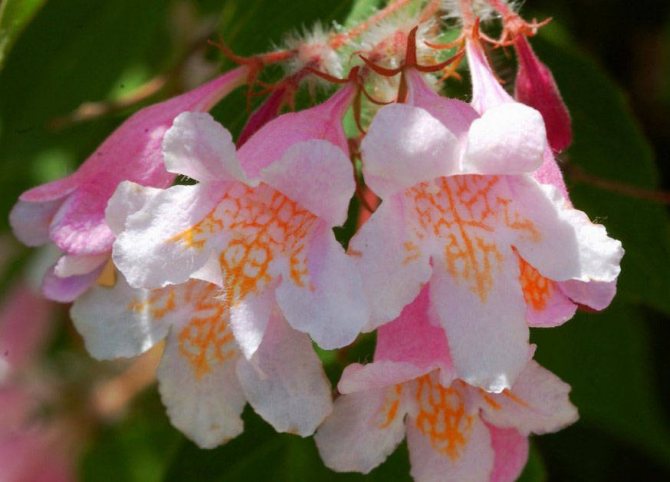
There is only one kind - the lovely colquition. The name itself speaks of high decorative properties. In the conditions of the Moscow region and the entire middle zone, colquitia grows up to 1 m.Young shoots are covered with hairs, old ones are covered with red bark.
Another name for the plant is pleasant colquitia. It is not surprising, because during the flowering period, the branches seem to turn into a lacy cloud.
At first, the peduncles have a rich pink tint, and towards the end of flowering they acquire white tones. The shrub is an excellent honey plant.
Kolkwitzia amabilis has been cultivated in botanical gardens in Russia for half a century. All specimens show an average shoot growth rate.
It was noted that the shrubs bloom in the fifth year of life, their fruits ripen in September. In the cold winter, some of the branches freeze over, but the bush itself quickly recovers the next spring.
Colquation breeding began several decades ago. Today there are only a few varieties.
Suitable for the middle lane:
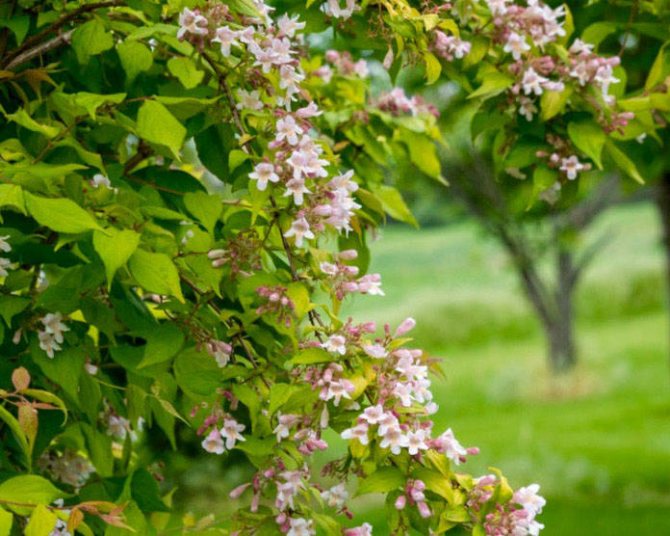

"Maradko". A dwarf plant with a weeping crown shape. In the photo of the colquity, you can see that the flowers cover the bush, as if with snow. Flowering lasts from mid-May to mid-June. In autumn, the leaves are painted in yellow and red shades. The variety is frost-resistant.
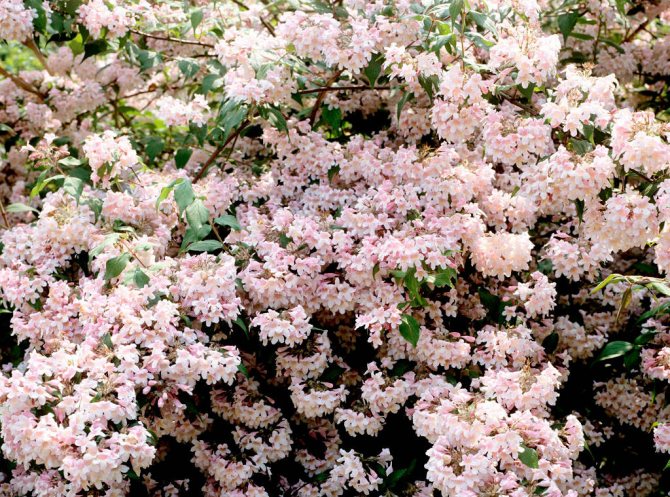

Rosea. The height of the shrub is 2 m, the shoots are easily amenable to formative pruning. The flowers have a deep pink color.
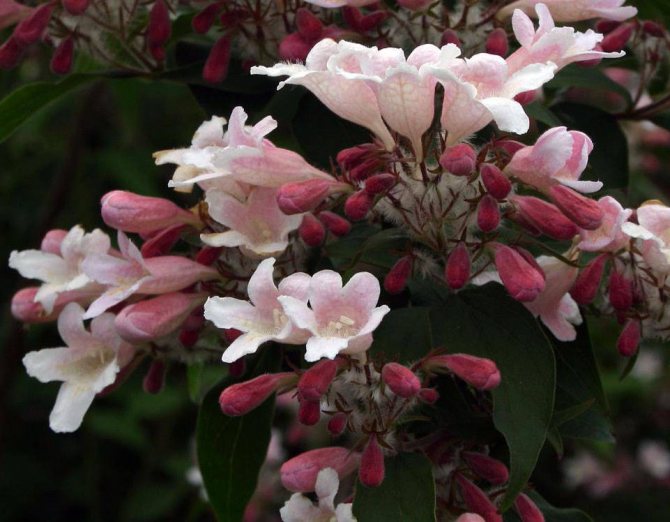

"Pink Cloud". Kolquitsia does not exceed 120 cm in height. The shoots branch well, the flowers are much larger than those of other varieties. The bush is resistant to drought and frost, great for urban landscaping.
On garden plots, the banks of artificial reservoirs, alleys, lawns and areas along the fences are decorated with colquation.
The main varieties of Kolkvitsiya Prelestnaya
Based on the type of Kolkvitsiya Adorable, breeders have developed various varieties that differ from each other in the size of flower buds and their color.
In Russia, Ukraine and Belarus, the most common varieties are Kolkwitzia Rosea, which is distinguished by its bell-shaped flowers of a dark pink hue, and Kolkwitzia Pink Cloud, whose flowers have a delicate creamy pink color and a throat with yellow-orange stripes.
Attention! It must be remembered that, unlike the main type of culture, its varietal specimens are less frost-resistant, requiring shelter for the winter period.
Breeding methods of colquation
The shrub is propagated by seeds, cuttings and layering. The highest germination rate is given by the material sown before winter.
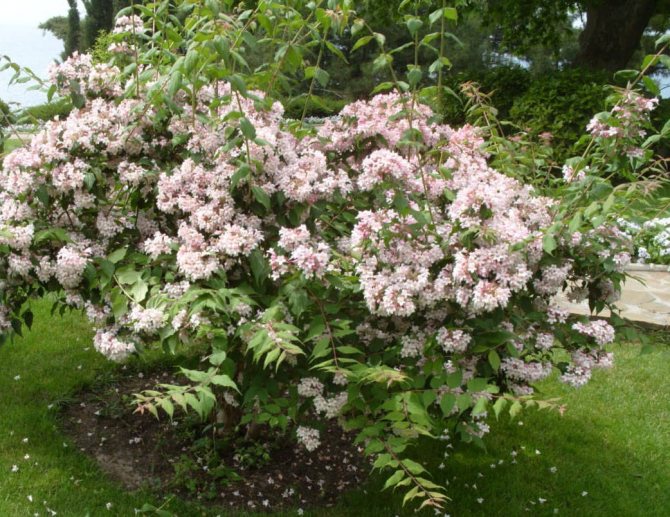

In late autumn, the seeds are buried 3 cm, friendly shoots appear in the middle of spring.
They manage to get stronger and develop well before the onset of the summer heat. Plants are transplanted to a permanent place after a year.
Spring sowing begins as early as possible.
Stratified seeds are immersed in moist soil, the first shoots appear by mid-summer. Throughout the current year, they will need regular watering and protection from the winds.
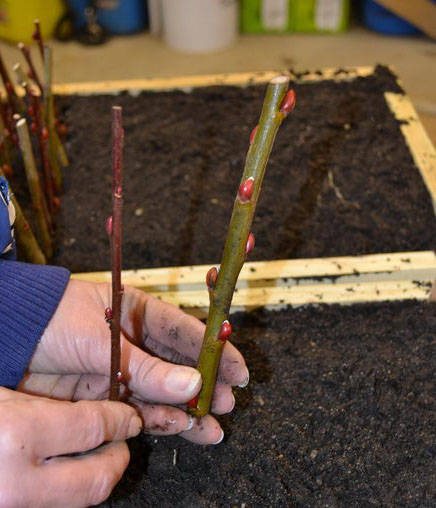

Green cuttings are cut from any part of the shoot. It is advisable to root them in greenhouse conditions.
Remove all leaves except the top ones. Additional processing in a growth promoter is not required.
The cuttings are immersed in a box with a nutrient substrate consisting of river sand, leafy earth and peat.
In the summer, care consists in systematic watering. For the winter, the boxes are removed in a cool place.
From the second year, the winter hardiness of the plant increases, then it can be transplanted to a permanent place.
To obtain layering, it is necessary to lower the young growth into the previously dug grooves.
For a firm contact with the ground, they are pinned with a wire or staple. It takes a year to develop adventitious roots.
The next summer, the layers are carefully separated with pruning shears and transplanted to a permanent place.
Where is the best place to plant kolkvitsiya?
The adorable colquicia is a light-loving plant that prefers light but fertile soil.Of course, the shrub needs reliable drainage, as well as regular moistening of the soil. When choosing a suitable place for colquation, it is worth paying attention to which winds prevail in the area not only in summer, but also in winter. It is very important. The plant does not tolerate cold winter winds. Therefore, the shrub should be carefully hidden, even if this aggravates the illumination.
Cultivation of colquits in the open field
Planting and further care of colquitia is not much different from other plants of the Honeysuckle family. Annual growth and lush bloom directly depend on the right location.
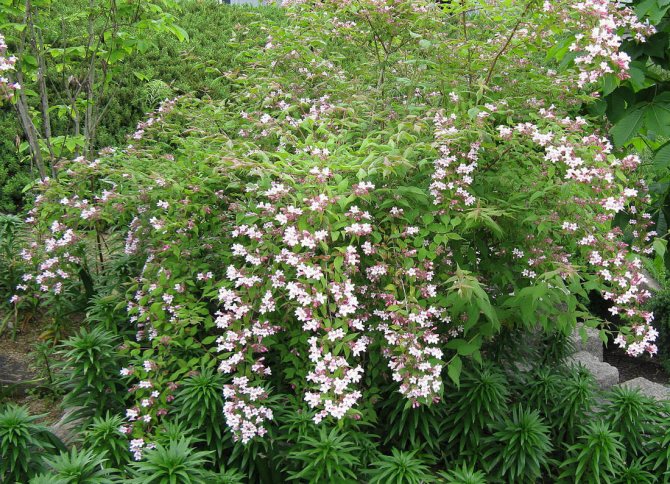

The shrub loves sunny areas, but the sun should be discarded.
Kolkvitsiya does not tolerate winds, the place must be protected by relief or buildings.
The soil must be nutritious and moist, the acidity level does not matter.
In areas with a high groundwater table, you need to take care of drainage. Care during the summer consists of watering, weeding and feeding.
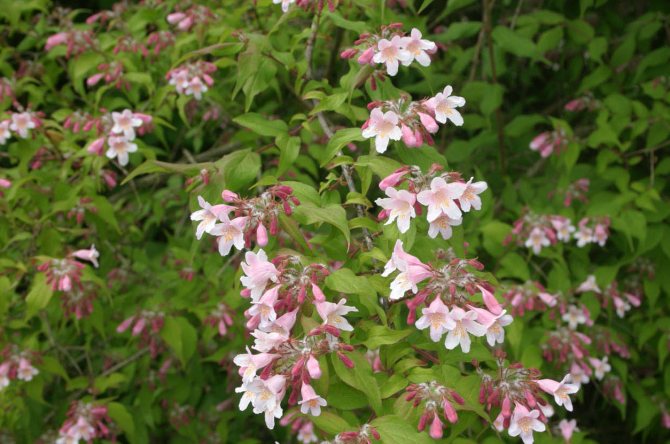

Diluted organic matter and superphosphate are used as fertilizers.
However, an overabundance of nutrients will lead to the fact that the plant will not overwinter well.
With the onset of persistent cold weather, the ground under the young bushes is mulched with a thick layer of foliage, peat or straw.
The branches are covered with spunbond and fixed. If the winter is cold, then spruce branches are placed on top of the covering material.
Kolkvitsiya: planting and care
For growing a beautiful healthy kolkvitia bush, both a sunny, protected from the sun place, and a slightly shaded area are suitable. In addition, the space for the growth of the shrub must be protected from cold winds.
The plant does not like lowlands, as cold air accumulates in them, which slows down the growth of the shrub.
The shrub soil prefers fertile, alkaline or neutral. The soil should be loose and free of weeds.
To plant a bush, a half-meter hole is dug, which is filled with fertile soil. The land intended for planting should contain humus, leafy soil, sand and compost. With acidic soil, it makes sense to add ash and lime to the fertile soil.
Watering colquity in the evening with settled water. Watering frequency depends on how high the air temperature is. Watering is done more frequently at high temperatures.
The plant is fed 2-3 times a season with organic fertilizers. The first feeding is carried out in the spring before the bush blooms, then during flowering. The last feeding is carried out in the fall. To do this, the plant is dug in and mineral fertilizers are applied to the ground around it.
In the spring, dried branches can be found near the kolkvitsiya. This suggests that the bush wintered with young shoots that did not have time to stiffen. Such shoots freeze slightly, and therefore they are removed before flowering.
So that the plant does not lose its decorative effect for this reason, the following measures must be taken:
- When the plant fades, it is necessary to reduce watering, and also stop feeding with organic matter.
- The soil around the bush should be covered with a good layer of peat, compost or wood chips. The diameter of mulching should be equal to the outlines of the bush itself or even exceed them by 10-15 cm. When the freezing temperature becomes constant, you need to repeat mulching the bush, using for this the fallen foliage of the kolkvitsia itself.
These simple steps will protect the roots of the plant from frost, and, moreover, will prevent it from forming numerous young shoots.
So that in the spring the plant has a decorative look, after the end of flowering, it is cut off, shortening the shoots that have finished blooming. In addition, some of the young shoots are also removed. After such pruning, only woody branches and a few of the most well-formed young shoots should remain on the bush.
In general, kolkvitsiya is frost-resistant, and requires shelter only if the winter is frosty and snowless.
Transplanting colquitsia in the garden
A two-year-old seedling with a closed root system will take root best.
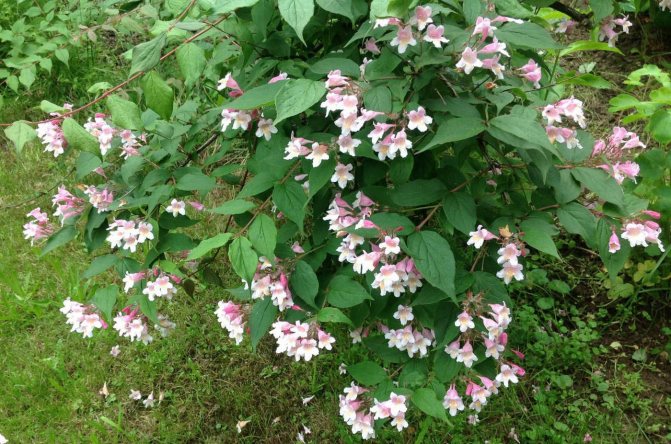

Spring is a good time for transplanting. The depth of the planting pit is 50 cm, its diameter is 40 cm.
The bottom of the pit is covered with broken brick or gravel, followed by a mixture of humus and sand.
The root collar should remain at ground level.
After planting, the seedling is well shed. The distance between plants in a group planting is 1.5 m.
Is it worth protecting the colquation from the cold?
Kolkvitsiya adorable in the first year after planting needs additional protection from the cold. The crown of the plant can be wrapped with kraft paper. If this is not the case, then it is recommended to use covering nonwoven materials - spunbond and lutrasil.
It will be possible to remove such a shelter only in late spring, when the air temperature does not drop below zero. Of course, kolkvitsiya refers to frost-resistant plants, but in the harsh winter, young shoots can freeze.
In the spring, remove all dry twigs. But the rejuvenation of the crown should be carried out only after flowering. This will only have a positive effect on the growth of colquation.
Diseases and pests
The shrub is resistant to almost all diseases. Sometimes the leaves are infected with aphids or thrips.
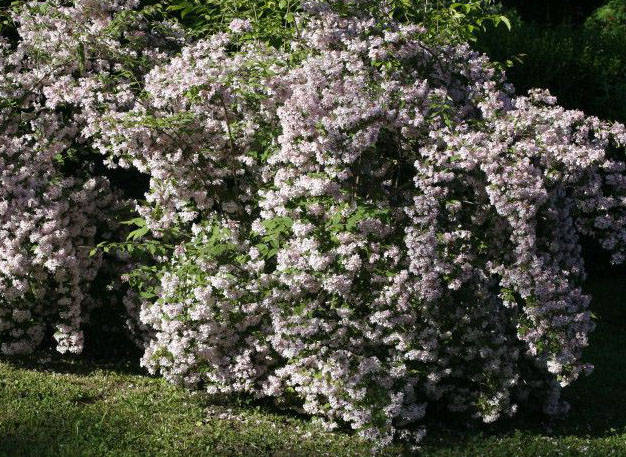

If these small insects are found, it is necessary to spray the whole plant with Fitoverm, Aktara or Kinmix preparations.
The curled leaves are the result of the life of the leafworm.
The solution "Inta-Vira" or "Decis" is used against it.
Shields and false shields are especially dangerous. Insects suck the juices from the trunk and shoots, causing them to turn brown and dry.
It is necessary to regularly inspect the bushes for infection. The crippled branches will have to be cut. The bushes are sprayed with "Confidor", "Aktellik" or "Mospilan". Processing is carried out twice, the interval is two weeks.
Thickened plantings are an excellent environment for all kinds of mites. Their presence is indicated by shapeless spots on the underside of the leaves.
The deformed green mass falls off prematurely. For the fight against ticks, the preparations "Apollo", "Anti-tick" or "Kleschevit" are suitable.
Reproduction and cultivation
You can propagate colquation in two ways:
- seeds;
- cuttings.
In the first case, sowing is carried out at the end of March. Use large boxes or separate pots with a mixture of sand and peat. The seeds are deepened by 5 mm, watered with warm water and left in a heated room or greenhouse. Seedlings appear in 3-4 weeks. And strong shoots with a height of about 25 cm are formed 4-4.5 months after sowing, in August. It is recommended to leave young sprouts for the winter indoors, and plant them in the garden next spring after picking.
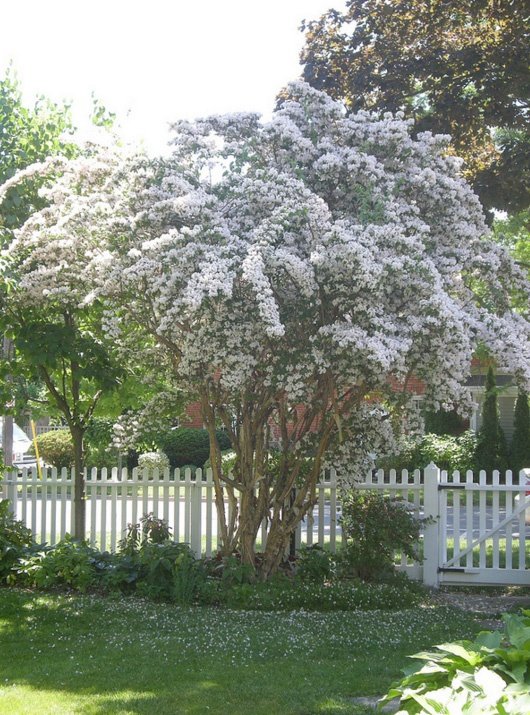

An easier and more effective way is grafting. In June, twigs with two or more knees are cut off and soaked for 14-16 hours in a solution of indolylbutyric acid (50 g per 1 liter of water). After that, the cuttings are planted in hotbeds or greenhouses with warm and humid air, where they will take root until next spring. The proportion of rooted shoots will be about 45%.
How does colquitia bloom?
Have you seen how lovely colquity blooms in the suburbs? A similar phenomenon can be observed around the middle of summer. The plant blooms profusely: under a layer of pale pink petals, bright greenery is practically invisible. The flowers themselves are small. Their length does not exceed 1.5 centimeters. The paired flowers have a fragrant aroma and are very similar to graceful cups.
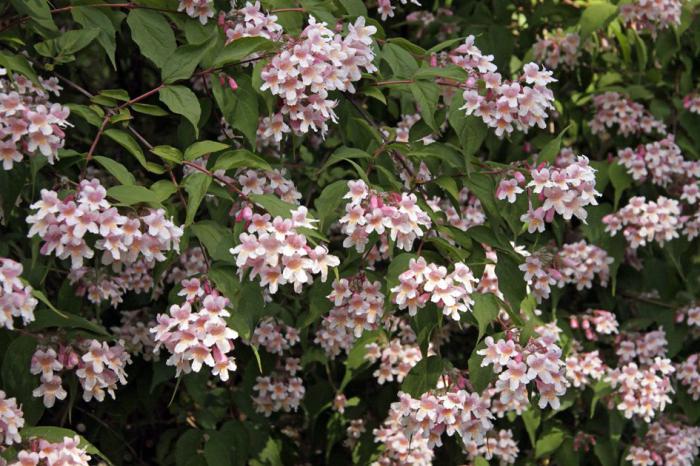

After flowering, fruits are formed - boxes covered with bristles. This happens in the fall. The length of such fruits is no more than 6 millimeters. In this case, the foliage of the plant is painted in bright colors.
How colquitia reproduces by seeds
Cultivation of colquitsia from seeds Photo of seedlings
Seeds should be planted in the ground before winter, but it is also possible in spring for seedlings in a greenhouse.
Read also: What perennials are sown before winter
For spring planting at the end of March, cold stratification is carried out for 2 months.
For this, the seeds must be stored in the refrigerator (stage 1: two weeks in the freezer, stage 2: on the refrigerator shelf).
Then the seeds are sown in large containers or in separate pots to a depth of one cm. They are grown in a greenhouse, and planted in the ground next spring.
Watering and feeding
Another important point, since all ornamental trees and shrubs require good nutrition. The adorable colquition is no exception. Every day the plant requires good watering, for which it is better to use warm, settled water. Two or three times a season you need to make top dressing. For this, it is preferable to use organic, from animal or plant humus. They are most important during flowering and active growth. In early spring, you can "treat" the plant with superphosphate or mineral fertilizer. This procedure is performed once a season.
Pruning
Avoid heavy pruning. To form the crown, it is enough to cut off only the old branches, without touching the lateral and upper branches.
For rejuvenation, pruning must be done at the end of flowering. This pruning stimulates the growth of new branches.
In the springtime, old branches are pruned.
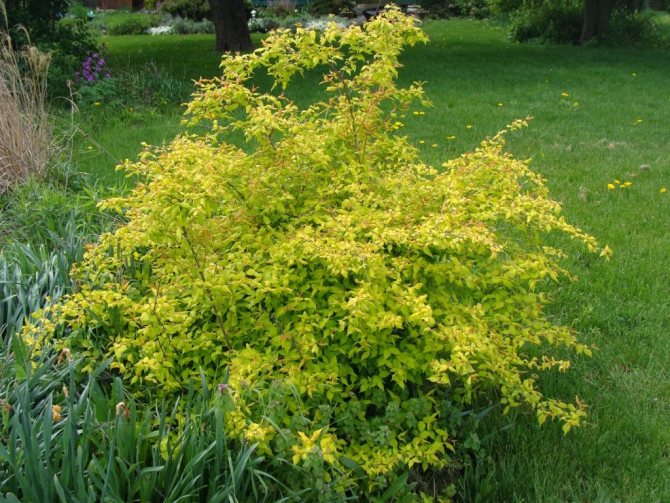

The shrub is especially beautiful in autumn, when the leaves acquire a very pleasant and light golden hue.

